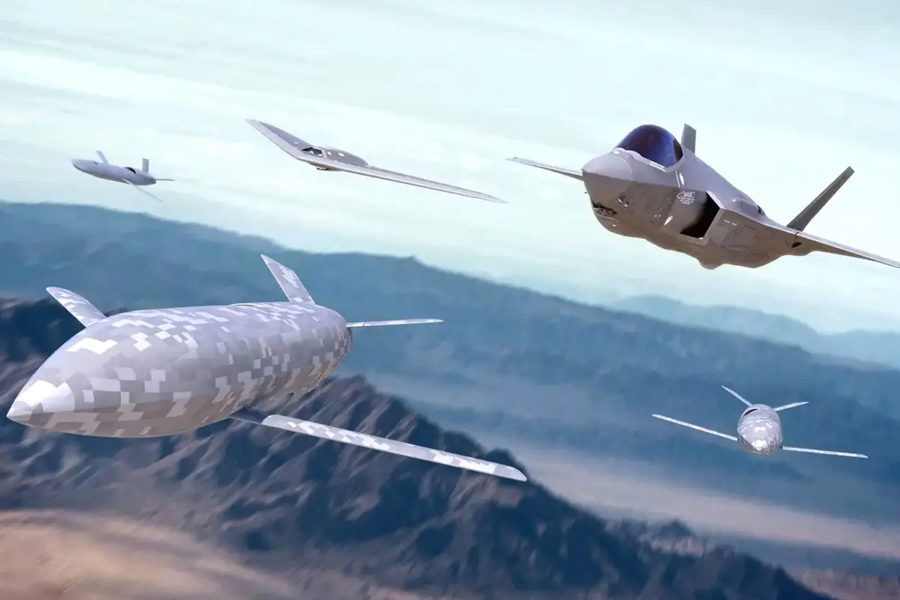NATIONAL HARBOR, Md.—Lockheed Martin, having “gold-plated” its initial bid for the Collaborative Combat Aircraft program, will focus on lower cost, more attritable aircraft in its proposal for the second increment, the head of the company’s legendary Skunk Works division told reporters Sept. 17.
“What we see from a macro-level environment is … something that has more expendable characteristics and is at a much, much lower cost point seems to be a good place to go explore. And so that’s where we’re exploring and putting time and energy in,” said John Clark, a Lockheed vice president and general manager of the experimental engineering outfit. He spoke at a briefing at AFA’s Air, Space & Cyber Conference organized by the defense contractor.
He added that the Air Force was still developing requirements for Increment 2 of the CCA program, which aims to produce uncrewed, autonomously piloted aircraft that will partner with manned fighters like the F-35 and provide additional firepower.
“Right now we’re actively looking at how the Air Force is going to go with their requirements,” he said, adding that he did not want to get out ahead of service leaders.
But he also cited the famous advice from ice hockey legend Wayne Gretzky: “’Skate where the puck is going to.’ That’s where we think it’s going to,” he said.
Lockheed was one of three unsuccessful bidders for Increment 1 of the CCA, and Clark said the company offered stealth capabilities in that bid that were above and beyond what the Air Force requested. He attributed that decision to the company’s conviction, based on its operational analysis, that stealth was required to make the aircraft survivable and capable of providing “something that actually had value to the Air Force over long haul.”
“With 20/20 hindsight, you could certainly armchair quarterback [that decision] and say, well, the Air Force isn’t valuing survivability right now, so we gold-plated something that they didn’t need gold-plated,” he explained.
Because of the physical characteristics of the winning designs for the current generation of CCA aircraft, and in particular the tail fins, they are likely to be visible to the enemy long before they are able to deploy their sensors, Clark said.
“These tails on the side … are big reflectors,” he said, making the aircraft visible to enemy radar, “which is why, when you look at things like the B-21 [bomber] or … the RQ-170 [Sentinel UAV] they don’t have tails.”
“The whole objective with [intelligence, surveillance and reconnaissance, or] ISR, is you’re trying to create an asymmetric advantage. If I can see you well before you can see me, I have an information advantage, and I can exploit that information to my benefit,” he said.
Clark added there is a trade-off between visibility and affordability. “I think that there will be a reckoning to come at some point when acquirers are looking at, ‘All right, I’m going to spend $15 million or $20 million an airplane, and the [operational analysis] is telling me that 80 percent or more of them don’t make it home.’”
That begs the question of what is the sweet spot for balancing cost and survivability, he said. “How many airplanes am I willing to spend that sort of money on before that’s a losing proposition financially as a nation?”
He said he was “very interested in how the Air Force will ultimately choose to go down that path. What is the right place [in the force structure] for an expendable asset, and what’s the right place for an attritable asset, and where do you want to have something that comes home every time?”

